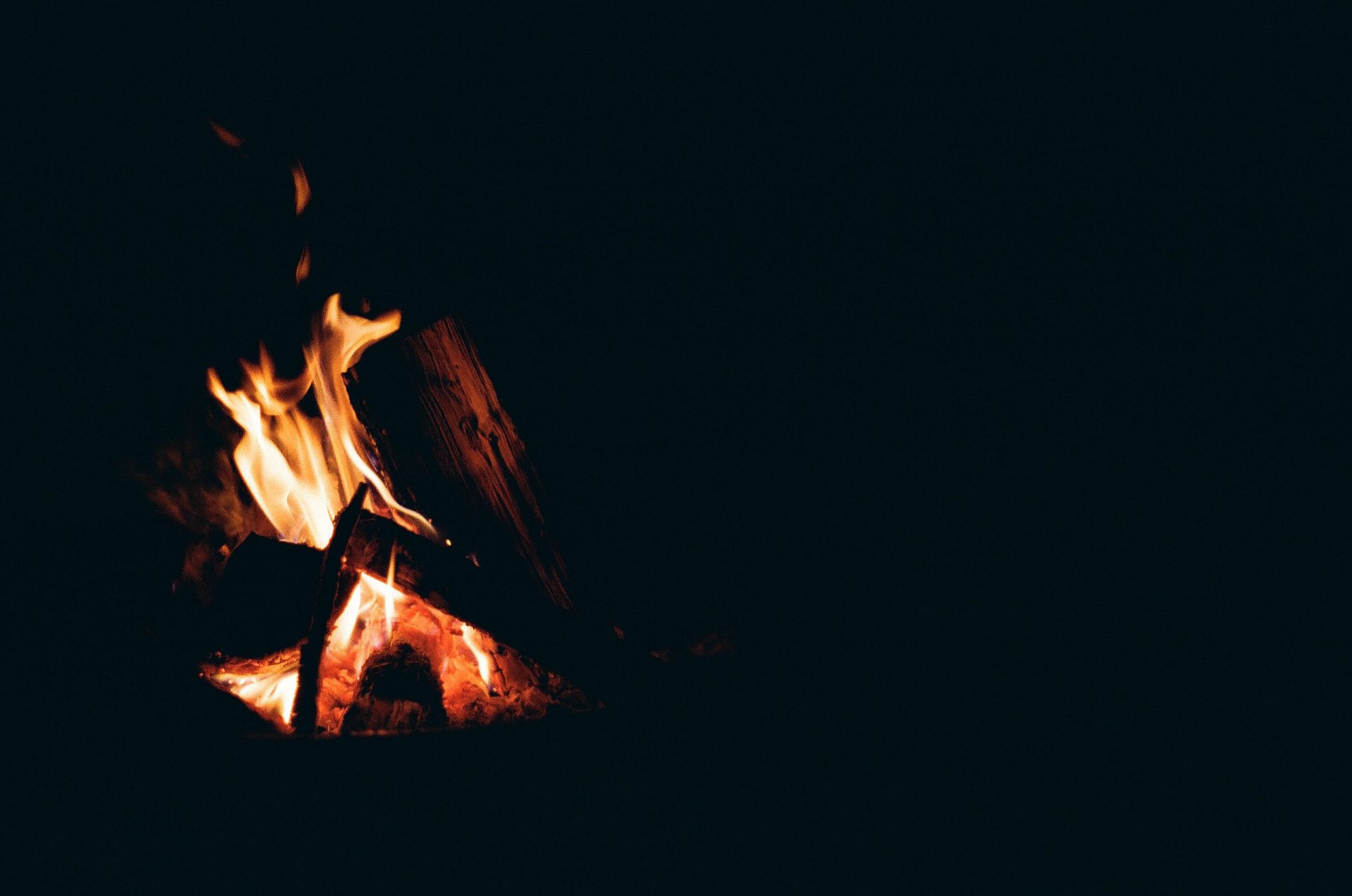
I got my start as a storyteller in the dark, around campfires, up at Camp Fife in Washington State, about eighteen years ago, now. In a real way, the Jed Horn series is simply a continuation of that old tradition.
There are two kinds of campfire story; the traditional ones that are passed down from fire to fire, for years, only changing in small details of the telling, flexible things that are simply the flavor the teller adds as he goes. The other kind are the ones I mostly told; the improvised scary stories.
My first was pretty simple. A wisp in the woods, a curious Scout, and a game of cat-and-mouse underground with a monster that could change shape at will. It wasn’t the best spook story ever told, but I had already learned a few things from it. Between that one and a couple of the later ones, I developed a few rules.
- It has to be immediate. The scene must be that very campsite, if possible. The immediacy lends extra spookiness, and really has your listeners looking over their shoulders. This is, of course, generally impossible to emulate with a novel, so I haven’t tried.
- It has to be something either the teller “experienced,” or someone close to the teller, who is now dead or insane. This ties into a similar immediacy, only personal instead of locational.
- The spooks and monsters cannot have been defeated in the story, but only set back.
My process for these stories was pretty simple; think of a spook and then build the story around it. In that respect, much of the Jed Horn novels have proceeded similarly. (Older and Fouler Things started simply as, “How am I going to approach vampires in these stories?”)
The woods at night provide an atmosphere that you have to work at in the printed medium to duplicate. It’s easy to start seeing or hearing things in the dark under the trees, especially when you’ve been thinking and talking about spooks and monsters all night. I knew I’d been successful when I started freaking myself out on the walk back to my tent (Oh, yeah, we made it a point of pride not to use flashlights to walk around camp at night. Night adaptation, old son!).
Perhaps my most successful was what we called the “Blue Lights Story.” Reconstructing the details after so long would be all but impossible, but it did involve faint blue lights appearing in camp at night, followed by things getting more and more bizarre and haunted until the entire valley was cloaked in impenetrable darkness, and howling things that no one could see were snatching people. I went with several other camp staffers deep into the woods to try to find the source of it, finding a cabin that hadn’t been there before, with a cadaverous creature inside, that nearly killed us all while the howlers took anyone outside the cabin. We finally overpowered the monster and burned the cabin down, only to find no trace of it in the morning. And as I finished the story, I suggested that some of the weird stuff that had preceded the appearance of the lights had begun again…
So, as you can see, spooky stories run deep in my storytelling career. Older and Fouler Things is only the latest, and will not be the last.